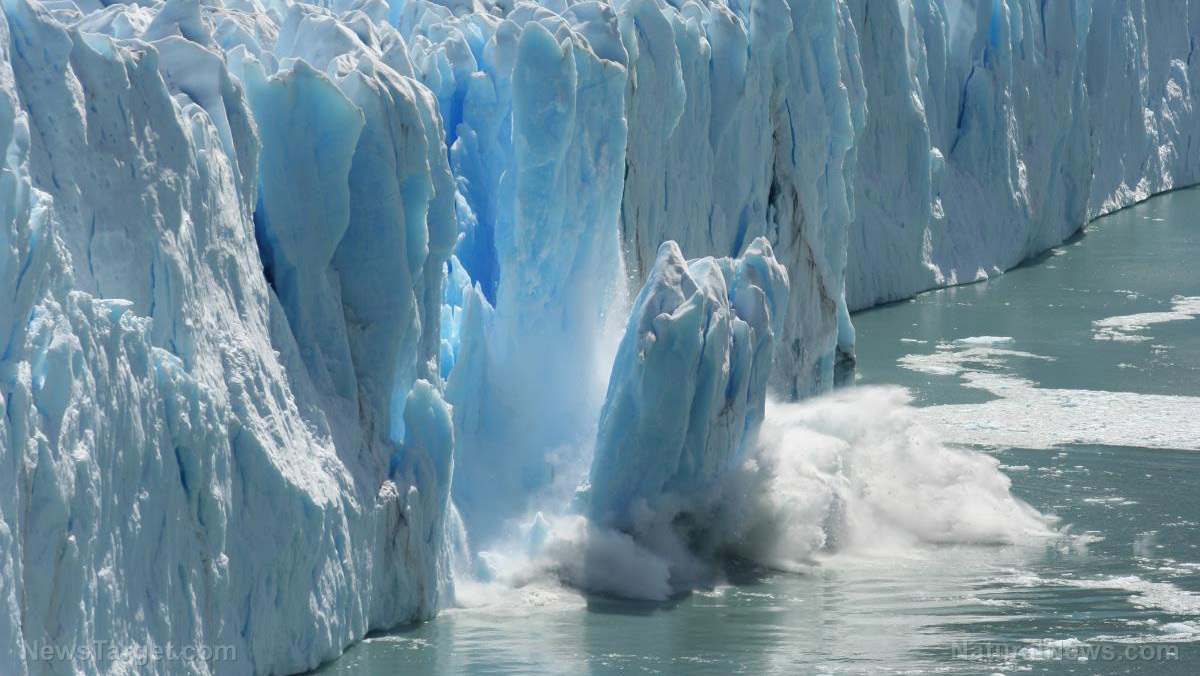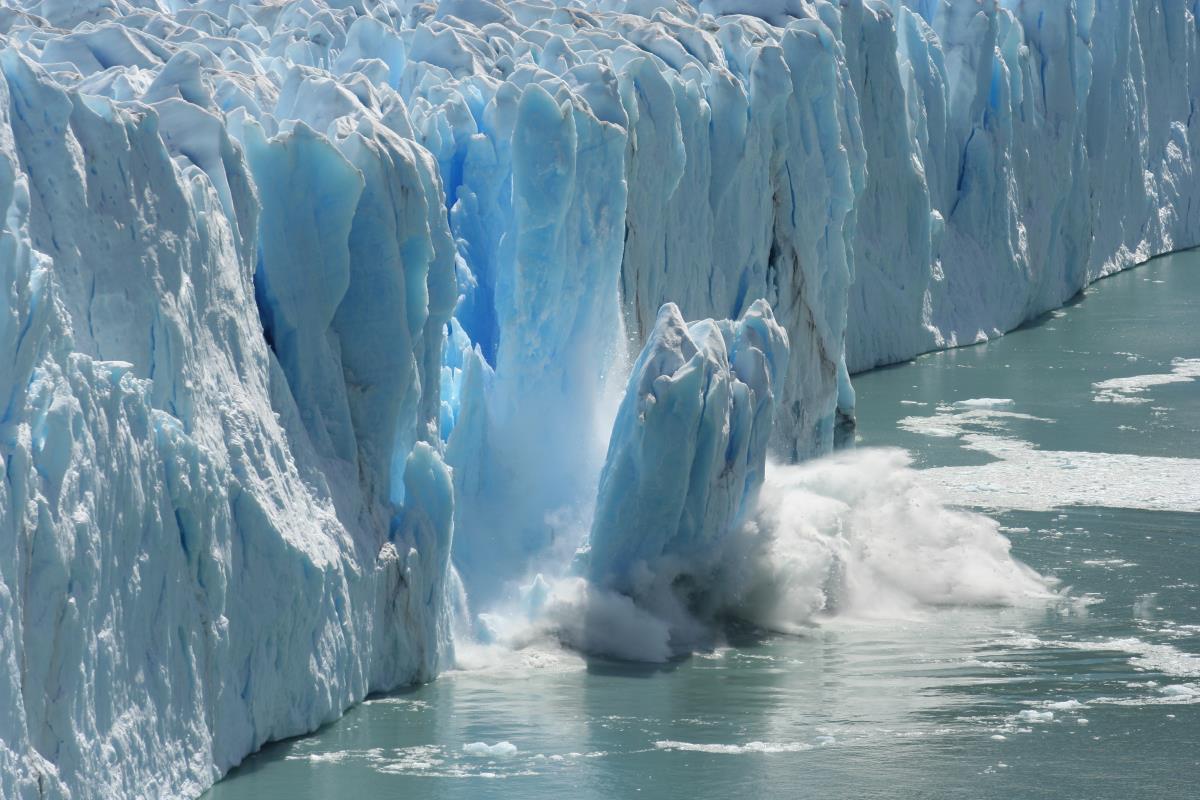
Volcanoes are usually a worry for people on land. But what if volcanoes under the ice erupt? According to a fascinating study, if volcanoes under the icy waters of Antarctica erupt, the planet would become "uninhabitable."
What are underwater volcanoes?
Underwater volcanoes are also called submarine volcanoes. Experts estimate that there are around 1,500 active volcanoes on the surface of the plane, but there are at least 10,000 volcanoes in the Pacific Ocean alone.
Water exerts at least 250 times more pressure on the surface of the earth than air and this higher pressure can lead to an underwater explosion.
Because most underwater volcanoes erupt at a depth of about 2200 meters below sea level, where the pressure is more than 218 atmospheres, water can't boil. The absence of a boiling sound makes it almost impossible to detect an underwater eruption, even with hydrophones or the underwater device used to detect and record ocean sounds from all directions.
Volcanoes in Antarctica
At least 5,000 researchers from all over the world reside in Antarctica to study the icy, unspoiled continent. These experts brave the extreme cold in the hopes of learning more about the Earth’s history.
Antarctica is a boundless region covered by the world’s largest ice sheet that contains at least 90 percent of fresh water on the planet. This ice sheet acts as a massive heat sink and its meltwater is responsible for the world’s oceanic circulation.
The ice sheet has a crucial role in the planet's climate. Yet while people may know about the ice covering Antarctica, not everyone is aware that the region also has several active volcanoes.
These volcanoes are part of a massive "volcanic province" that stretches across thousands of kilometers along the western edge of Antarctica. This volcanic province has been the focus of various studies for decades, but in 2017 researchers recently discovered at least 100 "new" volcanoes under the ice using satellite data and ice-penetrating radar while they searched for hidden peaks.
While these sub-ice volcanoes are currently dormant, what will happen if Antarctica’s volcanoes finally erupt?
Mount Takahe: Learning from the past
In a 2017 study, researchers took a closer look at Mount Takahe, one of Antarctica’s volcanoes near the remote center of the West Antarctic Ice Sheet.
Researchers hypothesized that Takahe may be involved in a series of eruptions rich in ozone-consuming halogens that occurred around 18,000 years ago. The experts explained that these eruptions could have set off an ancient ozone hole that warmed the southern hemisphere and made glaciers melt, finally ending the last ice age.
This kind of environmental impact is unique and before it can happen again, a series of eruptions also enriched in halogens from several volcanoes currently exposed above the ice must be active.
Scientists warn that this scenario is unlikely, as suggested by the Takahe study, but it isn't impossible. There's a chance that one or more of the many subglacial volcanoes, some of which remain active, could erupt in the future.
Underwater volcanic eruptions
Overlying ice in the Antarctic is very thick, making it unlikely that volcanic gases could ever reach the atmosphere. An eruption wouldn’t have the same impact as suggested for Takahe, but the volcanoes could still melt huge caverns in the base of the ice, which will result in huge quantities of meltwater.
The West Antarctic Ice Sheet is wet, not frozen to its bed. This means the meltwater would act as a lubricant that can make the overlying ice slip and move more rapidly. These volcanoes may also stabilize the ice because they're giving it something to grip onto.
The volume of water generated by a large volcano is inconsequential compared with the volume of overlying ice. While one eruption won’t significantly affect the ice flow, experts note that several volcanoes erupting close to or beneath any of West Antarctica’s prominent "ice streams" may cause massive destruction.
Ice streams are "rivers of ice that flow much faster than their surroundings." These zones are responsible for getting most of the ice in Antarctica delivered to the ocean. Any fluctuations in their speed will affect the sea level.
If the additional "lubricant" from several volcanic eruptions was channeled beneath ice streams, the following rapid flow may move West Antarctica’s thick interior ice into the ocean, making sea levels rise. Experts suggest that under-ice volcanoes could have set off the rapid flow of ancient ice streams into the vast Ross Ice Shelf, Antarctica’s largest ice shelf.
It's also believed that something similar could have happened 2,000 years ago with a small volcano in the Hudson Mountains underneath the West Antarctica Ice Sheet. If the small volcano erupted again, it could make the nearby Pine Island Glacier speed up.
Understanding the volcano–ice melt feedback loop
A large series of eruptions could also destabilize a lot more subglacial volcanoes.
When volcanoes cool and crystallize, their magma chambers become pressurized.
The only thing preventing the volcanic gases from escaping violently via an eruption is the weight of overlying rock or several kilometers of ice in the Antarctic. If this ice becomes much thinner, the pressure reduction can set off eruptions.
With more eruptions and ice melting, even more meltwater would be channeled under the ice streams.
Researchers are worried about a runaway effect taking place and the thinning ice causing even more eruptions. A similar incident occurred in Iceland, which recorded an increase in volcanic eruptions as glaciers started to recede at the end of the last ice age. (Related: Scientists accidentally discover life 3,000 feet under Antarctic ice.)
Things seem quiet for now, and the greatest threat from Antarctica’s many volcanoes will only occur if several erupt within a few decades of each other.
If those volcanoes have already grown above the ice and their gases were rich in halogens, their eruption could result in enhanced warming and rapid deglaciation. Thankfully, eruptions would need to take place repeatedly over many tens to hundreds of years before having enough of a climatic impact.
There's a greater chance of the generation of large quantities of meltwater from subglacial eruptions potentially lubricating West Antarctica’s ice streams. The eruption of even a single volcano close enough to any of Antarctica’s ice streams can result in significant amounts of ice being swept into the sea.
It's also possible that the resulting thinning of the inland ice could set off further subglacial eruptions that produce meltwater over a wider area and cause a runaway effect on ice flow.
The threat seems distant for now, but funding continued research into the freezing waters of Antarctica may be key to preparing for the worst, especially when the region's ice-covered volcanoes eventually erupt.
Sources include:
Please contact us for more information.





















